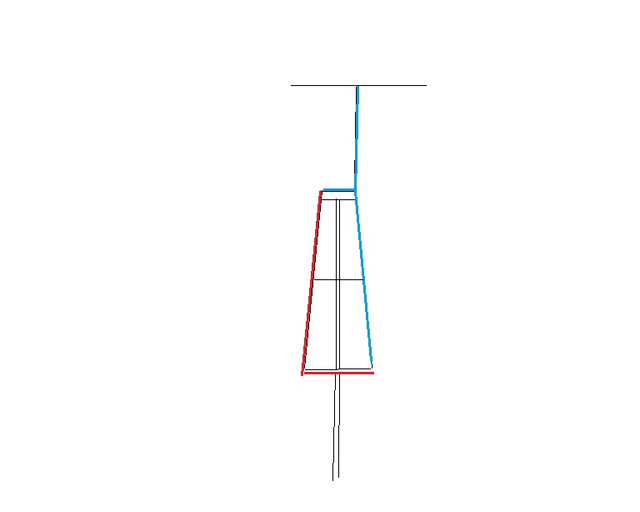DB why do you think removing the blue wire causes current distribution to change so much ?
I must have missed your post last night... I'm curious to the specifics of your question, the models I reposted that I think you are referring to don't show a large change in current distribution. The upper vertical with a cap hat and the basket area has pretty much the same distribution as before. The only difference I see with the models I posted is a small change in current flowing on part of the mast.
The only thing I can think of that you might be referring to is me talking about mast lengths that aren't optimal, and how the "blue line" has the effect of compensating for this by drawing current from the upper vertical element and cap hat portion of the antenna. Please clarify on what, specifically, you are referring to with this question so I can address it.
I have tuned the mast inside the radials to 187" x 1" showing me the best gain at a low angle. I did the same thing a long time ago when Bob started talking about how this part of the mast system on the A/P effected the tune and performance, but without your tricks...that alone was of little value concerning the match. Without these tricks I see the R value being a bit high even when I could fix the value of X.
will work on this length idea you speak of again using the model you call the Blue Line. That will be another difference no doubt. How sure are you that these tricks in matching are working as intended for these modeling programs?
The best match, be it based on X or SWR, does not imply peak gain. But then I'm sure you know this.
What are you talking about "tricks for matching an antenna"? When it comes to mast length on this antenna design, without the "blue wire" adjusting the mast length makes perfect sense, unless you think that the mast is not an active part of this antenna. With this we are simply adjusting the electrical length of a part of the antenna to match it to the rest of the antenna, which is a sound way matching an antenna, so I don't get this as being a "trick in matching".
I was also curious as to why you used the work "tricks" so what other matching "trick" are you referring to? At first when you mentioned "trick" I thought you meant the ability of 4nec2 to report of the changes in a model over a range of mast lengths, of which I am confident of the results. However, then you mentioned "tricks in matching" and I became confused. I don't recall mentioning any matching tricks when it comes to modeling, especially for this antenna as just putting the wires in to Avanti's specification gives a very good natural match in mu models to begin with.
Does 4Nec2 allow for tapper at wire connections? I use to see Henry using tapper with his Eznec Pro+ models, but of late he has stopped showing as much of his modeling work.
4nec2 has this feature, however I haven't played with it.
I see the sign of a J-Pole in this antenna...except I question how different it would be if the bottom hoop was made into a straight wire...like we see on the J-Pole. I believe that difference needs to be checked out and discussed.
I am out of time at the moment, but please, feel free to share your thoughts, both for and against this idea.
The DB


